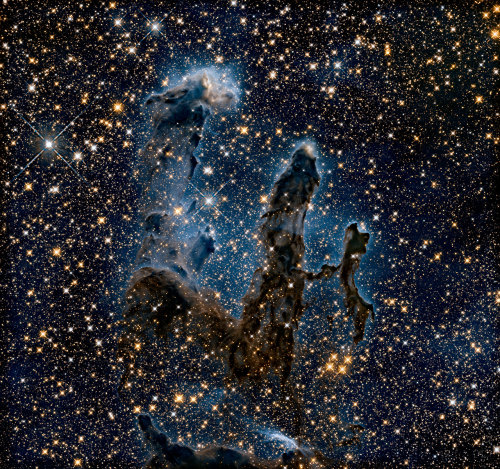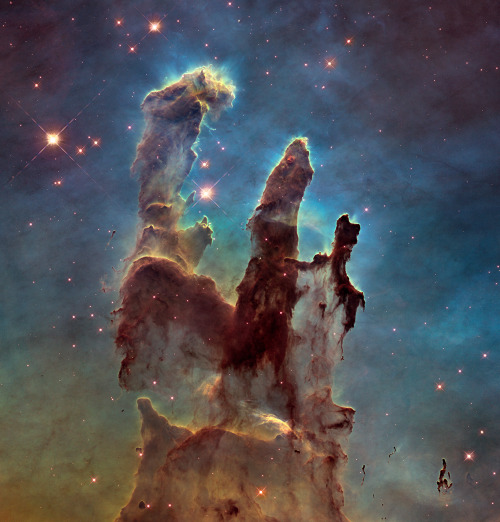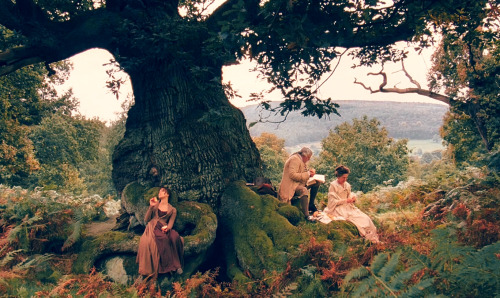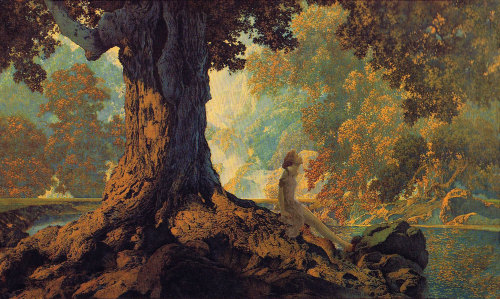Basicrefluxsblog - Welcome

More Posts from Basicrefluxsblog and Others


Sometimes… there’s more than meets the eye. 👀 You’re looking at two very different takes on an iconic image.
Human eyes can see only a small portion of the range of radiation given off by the objects around us. We call this wide array of radiation the electromagnetic spectrum, and the part we can see visible light.
In the first image, researchers revisited one of Hubble Space Telescope’s most popular sights: the Eagle Nebula’s Pillars of Creation. Here, the pillars are seen in infrared light, which pierces through obscuring dust and gas and unveil a more unfamiliar — but just as amazing — view of the pillars. The entire frame is peppered with bright stars and baby stars are revealed being formed within the pillars themselves. The image on the bottom is the pillars in visible light.
Image Credit: NASA, ESA/Hubble and the Hubble Heritage Team
Make sure to follow us on Tumblr for your regular dose of space: http://nasa.tumblr.com.










mugler fall 2020 rtw











“In the lush jungles of northeastern India, hard against the Bangladesh border, is a tiny village with an unconventional social order. Mawlynnong is where about 500 members of the indigenous Khasi tribe still follow ancient matrilineal traditions. Where succession, money, property, and power pass from mother to daughter. Where girls—literally—rule their roosts.
Karolin Klüppel wanted to see this inverted world for herself. So for nine months spanning two years, the Berlin-based photographer lived with different Khasi families in the “unbelievably clean, calm, and peaceful” village. What she found was a culture in which youngest daughters (called khadduh) inherit wealth and property, husbands move into their wives’ homes, and children take their mother’s surname.”
“After that they attend college or return to Mawlynnong, where they care for their parents. They may marry whomever they choose; there is no stigma attached to divorce or opting to stay single.”
Photographing in the Kingdom of Girls | Karolin Klüppel


Pride & Prejudice (2005), dir. Joe Wright “Dreaming” (1928), by Maxfield Parrish

Inst @johannaeolsson

𝙄𝙣𝙨𝙩𝙖𝙜𝙧𝙖𝙢 / 𝙗𝙚𝙖𝙪𝙩𝙚.𝙫𝙚𝙞𝙣 ✨









Paris apartment / photos by Valerio Geraci
THENORDROOM.COM - INSTAGRAM - PINTEREST - FACEBOOK

-
 sourmyewoolifu liked this · 1 year ago
sourmyewoolifu liked this · 1 year ago -
 need-you-for-tonight reblogged this · 2 years ago
need-you-for-tonight reblogged this · 2 years ago -
 micercosullatuapelle reblogged this · 2 years ago
micercosullatuapelle reblogged this · 2 years ago -
 ninthruler liked this · 2 years ago
ninthruler liked this · 2 years ago -
 adventurousimpulse reblogged this · 3 years ago
adventurousimpulse reblogged this · 3 years ago -
 milkandhoneywithcheesetoastyammi liked this · 3 years ago
milkandhoneywithcheesetoastyammi liked this · 3 years ago -
 allwillbecomeclear liked this · 3 years ago
allwillbecomeclear liked this · 3 years ago -
 40diasdluz reblogged this · 3 years ago
40diasdluz reblogged this · 3 years ago -
 cillianmurphyvevo reblogged this · 3 years ago
cillianmurphyvevo reblogged this · 3 years ago -
 kh-su liked this · 3 years ago
kh-su liked this · 3 years ago -
 zauroczeniaa reblogged this · 4 years ago
zauroczeniaa reblogged this · 4 years ago -
 ishougyy liked this · 4 years ago
ishougyy liked this · 4 years ago -
 angelofempire liked this · 4 years ago
angelofempire liked this · 4 years ago -
 toasty-the-atomic-toaster liked this · 4 years ago
toasty-the-atomic-toaster liked this · 4 years ago -
 feelingbluesblog liked this · 4 years ago
feelingbluesblog liked this · 4 years ago -
 jovialengineerflower-5c76882c liked this · 4 years ago
jovialengineerflower-5c76882c liked this · 4 years ago -
 wefashionablyfutile reblogged this · 4 years ago
wefashionablyfutile reblogged this · 4 years ago -
 soleilsana reblogged this · 4 years ago
soleilsana reblogged this · 4 years ago -
 zauroczeniaa reblogged this · 4 years ago
zauroczeniaa reblogged this · 4 years ago -
 ayse-kucuker-blog liked this · 4 years ago
ayse-kucuker-blog liked this · 4 years ago -
 thefacalbagyan liked this · 4 years ago
thefacalbagyan liked this · 4 years ago -
 deeperholes liked this · 4 years ago
deeperholes liked this · 4 years ago -
 biriyimbenbiri reblogged this · 4 years ago
biriyimbenbiri reblogged this · 4 years ago -
 catalina-bravo liked this · 4 years ago
catalina-bravo liked this · 4 years ago -
 stellawinxx22 liked this · 4 years ago
stellawinxx22 liked this · 4 years ago -
 insideallofusthereisawildthings liked this · 4 years ago
insideallofusthereisawildthings liked this · 4 years ago -
 seferis reblogged this · 4 years ago
seferis reblogged this · 4 years ago -
 machiavelique liked this · 4 years ago
machiavelique liked this · 4 years ago -
 maijacarr liked this · 4 years ago
maijacarr liked this · 4 years ago -
 cinnamon-gal reblogged this · 4 years ago
cinnamon-gal reblogged this · 4 years ago
